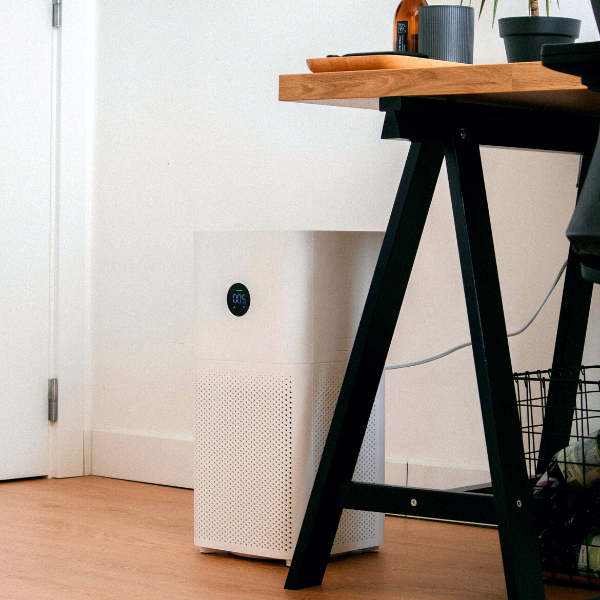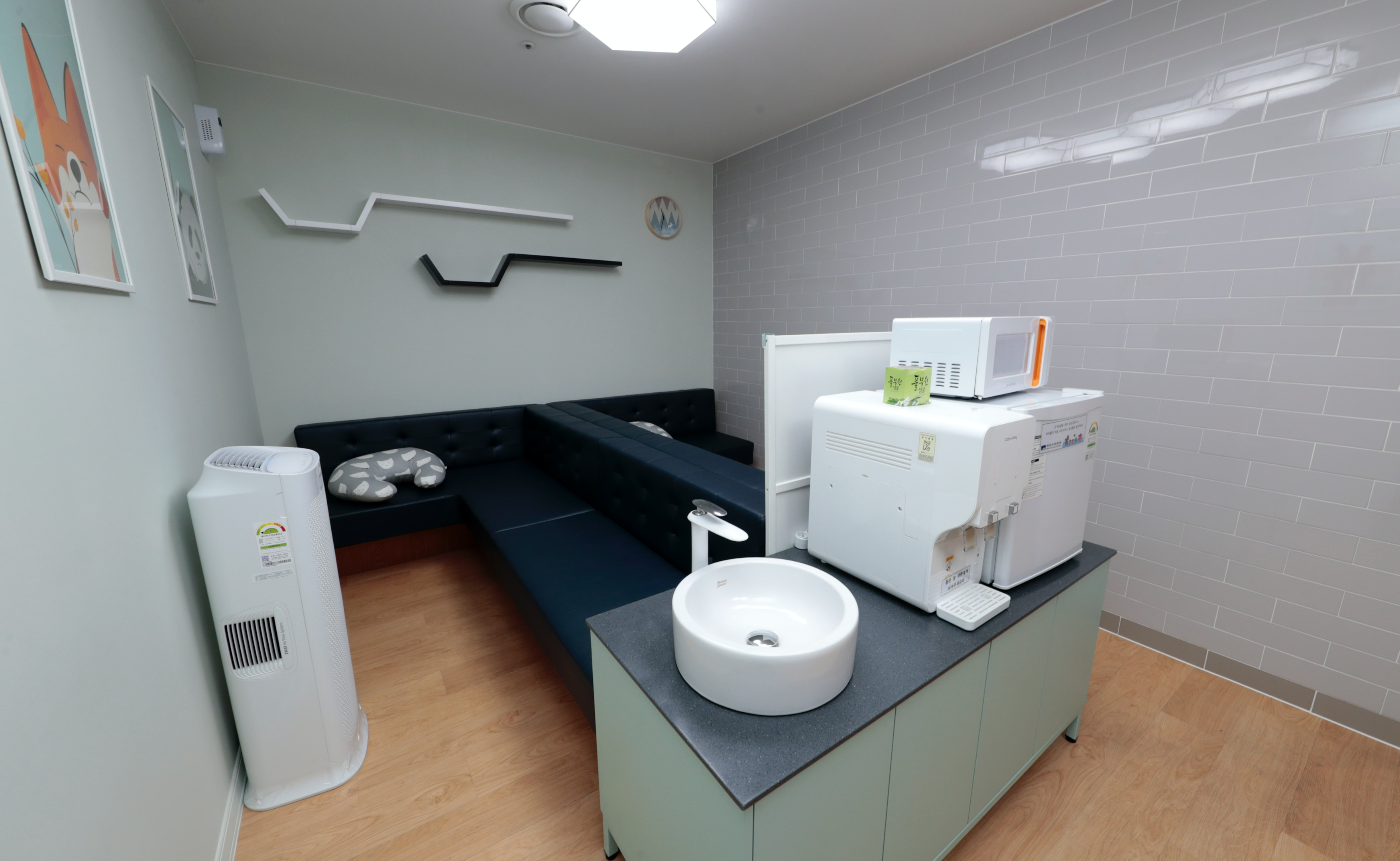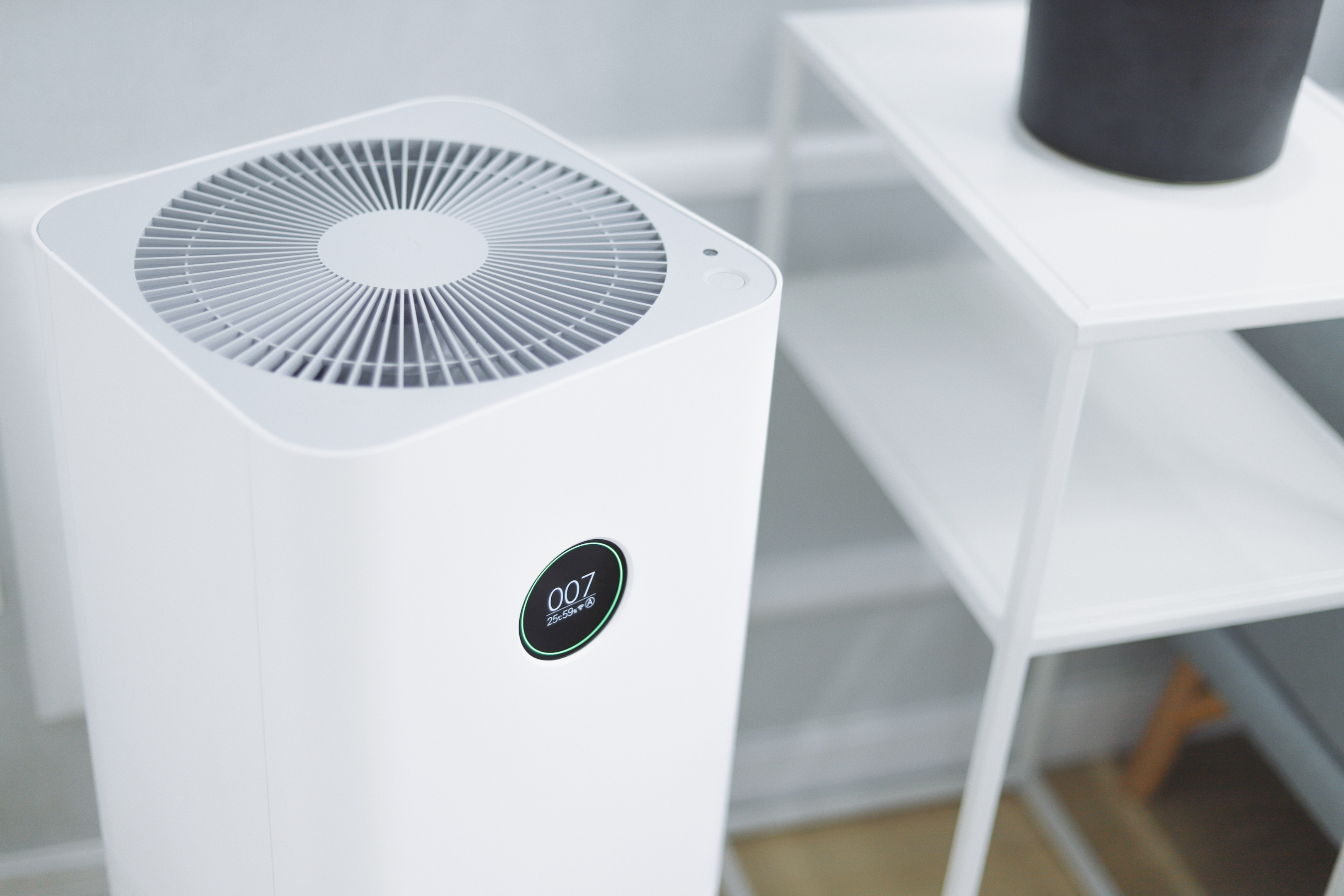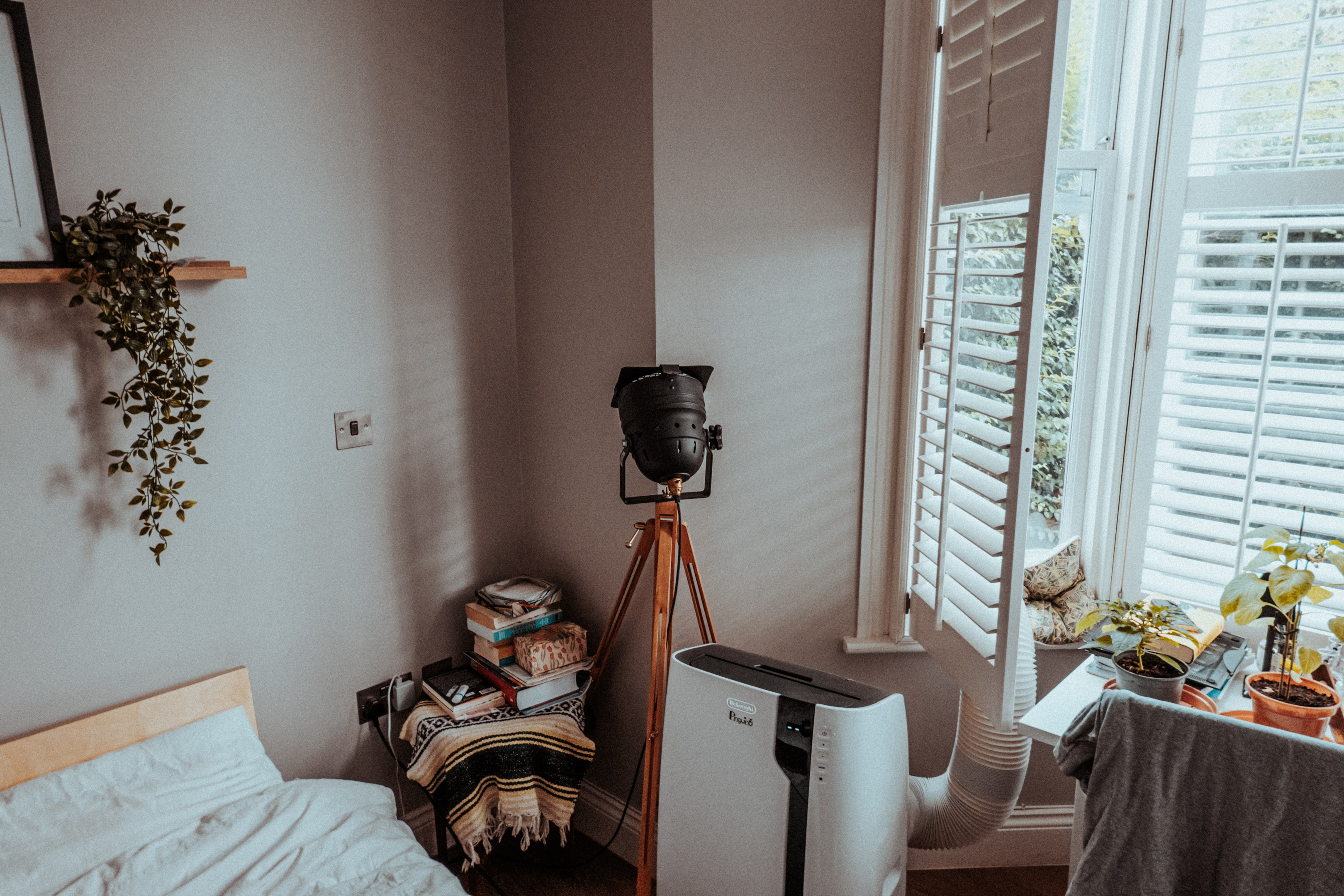It is no secret that our planet's environment and nature have come under grave threat due to humanity's disruptive practices. Fresh, clean air is an integral aspect of Earth's ecosystem.
According to WHO estimates, nine out of ten people live where a lack of air quality far exceeds the WHO guidelines.
In fact, around 3.8 million people die annually from exposure to smoke particles from faulty stoves and open fires.
Poor indoor air quality is also responsible for aggravating health conditions, such as allergies or asthma. Nearly 4 million people die each year from illnesses that are attributed to indoor air pollution.
Home appliance manufacturers provide a simple solution to our predicament - air purifiers. They've been around for some time but became quite the rage after the onset of the global pandemic.
Air purifiers help improve the indoor air quality of our homes, offices, and all other closed spaces.
Our indoor air is often more unclean and polluted than outdoor air. This is because indoor air is often riddled with airborne particles, such as pollutants, dust mites, carbon monoxide, volatile organic compounds, and other harmful particles that are detrimental to our health.
Therefore, an air purifier has become a necessary investment if you want to improve indoor air quality.
However, before you decide to visit your local store, it would help if you developed a running knowledge of air purifiers and their capabilities.
Here's everything you need to know about how air purifiers work and what to look for in an air purifier.
Do They Work?
One of the burning questions that people have when getting an air purifier is, "do they work?"
Yes, air purifiers work spectacularly and capture particles such as dust, smoke, pollen, airborne allergens, and even biological impurities.
However, not all air purifiers are built the same. The Environmental Protection Agency also warns people that the functionality of an air purifier is limited when it comes to filtering out dangerous gases, such as Radon.
Similarly, not all air purifiers can trap volatile organic compounds typically released from aerosol sprays.
While some think it is a bit of a reach for an air purifier to consistently trap particles with 99% efficiency, the science says that with regular maintenance, they can do just that! The best air purifiers will do a top-notch job of providing you with clean air. They will also get rid of many indoor pollutants and unpleasant odors.
To be specific, indoor air quality and many other factors affect the efficacy of air purifiers.
Many airborne allergens, such as dust mites, mold spores, bacteria, and viruses, can settle on surfaces and escape air purifiers.
Therefore, chemical disinfection and other sterilization methods must be used in conjunction with an air purifier to yield the most beneficial results.
How Do They Work?
Air purifiers have one or more filters that help them trap airborne pollutants and particles. Indoor air pollution gets sucked into the machine by mechanical suction from a fan, and clean air gets pumped out.
The whole set-up needs to be effective against small particles, so air filters are typically made of paper, fiberglass, or a mesh network of different materials.
Additionally, air purifiers work to remove even pet dander from indoor air.
However, different air purifiers have different efficacies based on filter types. There are a number of them, which we will get into later.
You can find air purifiers with HEPA filters, UV light filters, ionizers, or activated carbon filters.
But do all air purifiers live up to the hype? Can they filter fine particulate matter and revamp your lifestyle? These are the questions you must ask yourself before selecting a particular device.
Are There Any Drawbacks?
Unfortunately, air purifiers have certain disadvantages, just like any other invention. They're made of mechanical parts and filters, integral components of an effective air purifier.
However, these parts are subject to constant wear and tear, and lower quality purifiers can start losing their efficacy in a matter of months if proper care is not taken. Old or worn-out filters don't improve air quality.
Also, air purifiers require a stable indoor environment to clean air. Drastic changes in the room's air levels, such as when you open the windows for ventilation, can affect the machine's output.
Don't fall for marketing hoaxes that promise freedom from allergy symptoms and claim to destroy biological impurities unless you are confident in the purifier's specifications and aiming to obtain a high-quality air purifier.
On a lighter note, all these drawbacks have simple fixes, such as:
-
Keep the windows closed when operating the air purifier to improve air flow and effectiveness.
-
Regularly replace filters to keep the device at optimal performance levels.
-
Research the different types of air purifiers before deciding on a specific model.

Is There Only One Type of Air Purifier?

There are many different types of air purifiers in the consumer market.
While the primary objective is to provide clean air, different air purifiers work at various capacities.
While some clean large particles like dust mites, pet dander, and pollen, others excel at removing many airborne pollutants of a smaller size.
Here's a list of the different air purifiers based on the type of air filter technology:
Activated Carbon Filter Purifiers
Air purifiers with an activated carbon filter are similar to models with a HEPA filter.
Activated carbon filters are high-efficiency filters with excellent absorption; they can attract particles, such as pollutants and harmful gases, and successfully trap them on the filter mesh.
In fact, an activated carbon filter can even trap Radon and volatile organic compounds!
HEPA Air Purifiers

HEPA stands for high-efficiency particulate air. HEPA filtration technology is readily employed in commercial laboratories for its phenomenal efficacy.
Where the human eye can only see particles sized 10 microns or above, a HEPA air purifier can filter 99.97% of fine particulate matter sized 0.3 microns!
A HEPA filter consists of a fine multi-layered mesh of fiberglass threads, providing varying sizes of gaps. These are sealed by a plastic or metal frame.
The powerful exhaust fan draws air into the air purifier, which can filter particles in several ways.
Particles bigger than the fiber threads are captured via impaction, medium-sized particles are intercepted as they come into contact with the fibers, and delicate particulate matter is trapped via zig-zag diffusion through the different gaps.
True HEPA filters are an excellent choice for eliminating unpleasant odors and pollutants causing allergies or asthma and for providing cleaner air.
Ionic Air Purifiers
Many air purifiers use ionizers to effectively trap certain particles. Ions are charged atoms and molecules, like static, which can bond to dust and allergens. Ionic air purifiers attract these ions to reduce air pollution.
However, ionic air purifiers can be effective ozone generators.
While ozone protects us from the sun's harmful radiation, it is also a potential lung irritant for those with certain sensitivities.
Therefore, it can worsen the symptoms experienced by allergy sufferers.
UV Light Air Purifiers
Many air purifiers also use ultraviolet light filters to target germs and microbes.
Unlike other types of filters that trap airborne particles, UV light filters destroy biological impurities like bacteria and viruses.
Consequently, the best air purifiers capture airborne particles using HEPA filters and activated carbon filters, then target germs and microbes to completely eradicated them via UV light.
Expert Advice
When selecting an air purifier, consider the specific needs of your home or office. Keep in mind the purpose of the device, the types of filters it uses, and the room size it will serve. Regular maintenance and filter replacement are crucial for optimal performance. Additionally, research different features and financing options to find the best fit for your budget and lifestyle.
What Is a HEPA Filter?
As mentioned above, HEPA filters are your best bet for protection against ultra fine particles, such as dust, dander, pollen, and mold spores.
According to the Environmental Protection Agency, true HEPA filters respond effectively against the most penetrating particle size (MPPS) - 0.3 microns.
They can also capture many viruses, including the coronavirus. If you're looking to buy an air purifier with a true HEPA filter, you can rest easy knowing that it will take care of the most concerning particles and drastically improve indoor air quality.
As a result, true HEPA filter air purifiers are currently considered the best available type. However, there are many other factors to consider when buying an air purifier. We will discuss each of them in detail.
What Should You Look for In an Air Purifier?

Here's a list of ten things you need to consider when buying an air purifier.
-
Clean Air Delivery Rate (CADR) Ratings
Many air purifiers are labeled with a clean air delivery rate number. CADR is a metric used and developed by the Association of Home Appliance Manufacturers. It indicates air purifier efficacy in filtering particles of varying sizes. An air purifier works by utilizing an exhaust fan that pulls air from the indoor environment and cleans it across the system of one or more filters.
Therefore, it can be thought of as a measure of the cleaning speed of the air purifier.
An air purifier's CADR rating is proportional to its efficacy. For instance, a clean air delivery rate of 200 means the device adds 200 cubic feet of fresh air per minute.
As a result, you should aim for air purifiers with a clean air delivery rate of 300 or more. In fact, the Environmental Protection Agency has even provided us with the minimum CADR rating guidelines according to room size:
Room Size (sq. feet) /Minimum CADR (cubic ft. per minute):
100 sq. feet/ 60 CADR | 200 sq. feet/ 130 CADR | 300 sq. feet/ 195 CADR | 400 sq. feet/ 260 CADR | 500 sq. feet/ 325 CADR | 600 sq. feet/ 390 CADR
You will notice how a 500 sq. feet room area requires an air purifier with a minimum CADR rating of 325.
As a general rule, you should know that the higher the CADR rating, the higher the efficiency.
Many air purifiers have multiple CADR ratings for smoke, pollen, dust, and other particles to help you choose the best fit.
-
True HEPA Filters
As previously discussed, HEPA air purifiers work wonders for people with allergies or asthma. They can trap 99.97% of particles that are 0.3 microns in size, and the efficiency only goes north of the rating as particle size increases.
Many popular air purifiers comprise multiple filters, including the HEPA variety, that work in sync to give the best results.
For instance, some air purifiers use an activated carbon filter with a true HEPA filter to eliminate smoke odors and trap harmful gases.
-
Purpose of the Air Purifier
Air purifiers filter many types of pollutants and particles, so you must carefully establish the purpose of buying the device. These are some of the needs you might have for using an air purifier:
Allergies
Air purifiers designed for allergy relief utilize multiple filters, including HEPA filters, to remove allergens and airborne irritants.
Smoke
Several air purifiers work to specifically tackle issues related to smoke. These models rely on carbon filters to remove smoke, toxic fumes, and soot to improve air quality.
Chemicals
Some air purifiers work with additional filters that can trap volatile chemical vapors. These are perfect for people with multiple chemical sensitivities (MCS).
Asthma
Asthma patients can expect their symptoms to be triggered by several factors. Therefore, you might consider buying a HEPA air purifier that uses chemical and odor filtration. These can remove most of the concerning allergens from the indoor environment.
Pets
Some air purifiers work using reusable filters. These filters are perfect for trapping large particles, such as pet dander ad hair. If you want more functionality, consider a model with odor filtration.
-
Types of Features
Consider what features you require before making a purchase. Any air purifiers worth their salt should have at least some of the following features:
-
Wi-Fi Capability
Wi-Fi capability is super convenient as you can operate your device using a smartphone, tablet, or laptop.
-
Air Quality Indicators
Air quality indicators provide users with real-time updates regarding the quality of air. It's an effective metric for using an air purifier efficiently.
-
Energy Star Rating
The Environmental Protection Agency issues an Energy Star rating to energy-efficient appliances that allow you to save money. If you want to conserve energy, consider opting for an Energy Star-rated device.
-
-
Frequency and Cost of Maintenance
Maintenance cost is another critical factor to consider when buying an air purifier. If you're on a budget or don't want hefty running expenses, you might purchase a device that does not require frequent filter replacements. Here's how often you need to replace the following filters:
-
HEPA Filters
HEPA filters can usually last a year before they need replacement.
-
Activated carbon Filters
Carbon filters can last you many months, depending on usage.
-
Pre-Filters
Pre-filters trap large particles, including dust, pet dander, and hair. These usually last about 3 months. However, certain pre-filters are washable and can be used for an extended period.
-
-
Portability
Portable air purifiers are highly lightweight and mobile. Some devices can neatly sit on your desk or shelf if you require a model for personal use.
You can conveniently move them from room to room or bring them to the office or on an out-of-city trip!
-
Noise Generation
Air purifiers work by pulling in air through a series of filters. As the air passes through the mesh network, noise is generated. The amplitude depends on the type of device and the functioning speed. Higher speeds tend to develop a high-frequency humming sound which some people don't like.
Consider calling an air purifier provider to find out how much sound it makes before coming to a final decision. Specific devices are rated as low as 20 to 17 decibels and don't generate a lot of noise even at high speeds.
-
Room Size
Portable air purifiers are suitable for personal use. However, room size should be your yardstick for measuring purifier size.
Small purifiers are designed for personal spaces and rooms smaller than 300 sq. feet.
Medium-sized devices can cater to rooms with an area between 300 and 700 sq. feet.
There are even whole-house models you can choose from.
As a rule of thumb, consider getting a device rated for a room larger than the one you're making the purchase for, so you can use it effectively on lower settings as well.
-
Location of Device
It is essential to install your device at an optimal location since this will considerably affect purifier efficacy.
Generally, it is recommended to place the purifier in your bedroom or living room since people mostly use these spaces.
Whole-house models are a popular choice since they connect directly to a house's HVAC system to purify all rooms!
-
Air Change Rate
The air change rate is a metric similar to CADR. It indicates the number of times the device has cleaned the room's air in 60 minutes.
For instance, an ACH rating of 5 means the purifier cleans the room's air every 12 minutes. For efficiency purposes, consider devices rated at 5ACH or above.
Want to Learn More About Air Purifiers?
If you'd like to learn more about our extensive range of air purifier options, please contact us through the following channels:
Call us at: 773.337.8822
Or email us at: sales@airpuria.com
Also, feel free to visit our website to see more of the products and information that we have to offer: airpuria.com
We'd love to speak with you!
Financing Options and Choosing the Right Air Purifier
Air purifiers can be a significant investment, so it's essential to explore financing options to make your purchase more affordable. Providers like Airpuria offer financing for all customers with rates as low as 0% for up to 18 months. They also provide business financing with flexible terms and competitive rates.
-
Airpuria offers 0% interest rates for up to 18 months for individuals (financing for individuals).
-
Business owners can apply for special financing programs tailored to their needs (financing for businesses).
The Bottom Line
In conclusion, air purifiers are excellent for removing dust, pollen, smoke, allergies, toxic fumes, and other pollutants that disrupt indoor air quality.
You should purchase one if you want to improve your health and lifestyle. There's no universal choice when buying the device, and it all depends on your particular needs.
Therefore, check for sound ratings, device size, filter types, and AHAM certifications, including CADR ratings...
Or, start by giving us a call and telling us exactly what you need! We're always available to help someone on their journey towards improving their health. We'll help you find an air purifier that's perfect for your home or business. Happy breathing!
Important Takeaways
-
Determine the purpose of your air purifier, such as allergy relief, smoke removal, pet dander reduction, or asthma management.
-
Look for specific features like Wi-Fi capability, air quality indicators, and Energy Star ratings.
-
Factor in the frequency and cost of maintenance, including filter replacements.
-
Consider the portability, location, and air change rate of your chosen device for optimal performance.

